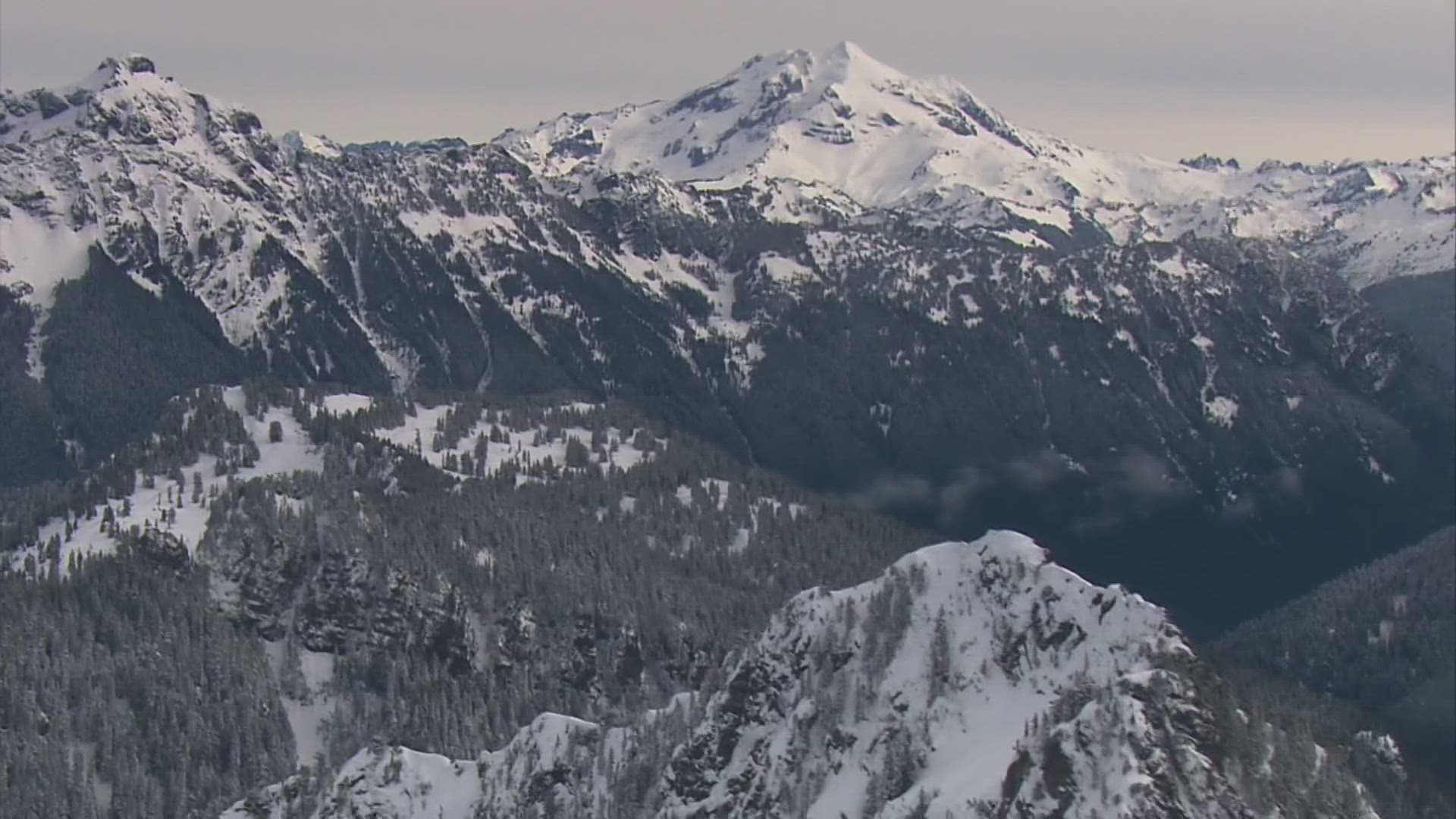SKAMANIA COUNTY, Wash. — Over the past three months, there have been over 400 reported earthquakes at Mount St. Helens, but researchers at the Cascade Volcano Observatory said Wednesday the elevated seismic activity is still in line with previous periods.
The Pacific Northwest Seismic Network has measured hundreds of earthquakes at the volcano since July 15. There were about 40-50 earthquakes per week in late August to early September. Researchers have recorded about 30 earthquakes per week at Mount St. Helens recently. For comparison, researchers said there were about 11 earthquakes at the site per month since 2008.
The largest earthquake since July was a magnitude 2.4 on Aug. 27, but most of the earthquakes have been less than a magnitude 1.0, according to the Cascade Volcano Observatory. The depths of the earthquakes have been between 1.2 and 3.7 miles below sea level.
Despite the elevated earthquake activity, Weston Thelen, research seismologist at Cascade Volcano Observatory, said the recent trend is not concerning.
"When you read a headline that says there are 400 earthquakes that happened underneath a volcano, it's natural to think for people to think that this is a big deal," Thelen said. "The reason we put out the information statement is that we wanted to put out some context to why these over 450 events that we have seen are not a big deal and typical of what we expect to see at Mount St. Helens."
Thelen said researchers have studied Mount St. Helens for a long period of time, giving them ample time to identify and process the trends in earthquake activity.
Because the earthquakes have been relatively deep within the volcano, Thelen said researchers are less concerned than if they were happening near the surface.
Scientists said there were longer periods of time with more earthquakes at Mount St. Helens from 1988-1992, 1995-1996 and 1997-1999. None of these periods directly led to an eruption at the volcano.
Mount St. Helens last erupted on May 18, 1980. Fifty-seven people were killed, making it the eruption the deadliest in U.S. history.
"When we look back at the record we can see lots of time periods between the last eruption in 1986 and the eruption in 2004 there have been at least three time periods we have seen similar activity to what we are seeing now," Thelen said. "So what are seeing now? We are seeing now earthquakes that are occurring that are small and they are happening fairly deep. They are happening in a depth range that is two kilometers below sea level. That's over a mile below sea level. These earthquakes are deep. They aren't happening in the shallowest volcano which is what we might expect if we were to see activity at the surface. They are deeper and are happening at a rate, a size and have a character that looks a lot like a lot of other sequences that occurred in the late 80s and in the mid and late 90s."
Thelen said scientists have better sensors that are more sensitive to a broader range of earthquake activity, gas sensors that alert them in real-time what species of gases are emitted from the volcano, and satellites that measure increased thermal activity coming out of a volcano.
Researchers had none of these tools in the 1980s.
"We really do have a better sense of what is going on at the volcano," Thelen said. "So far this has really just been a seismic sequence. There is no change in inflation or deflation at the volcano. There is no anomalous gas that we have been able to detect. Those are the types of things we'd expect to see."
Thelen said scientists don't expect anything to happen at Mount St. Helen's surface, because the worrying signs have not intensified in recent months.
"Until things shallow up in terms of where the volcano is deforming and the gas output gets significantly higher, and the earthquake rates get significantly larger we don't expect anything to happen at the surface anytime soon," Thelen said.
Scientists will continue to monitor the volcano's activity to see if it falls in line with previous trends. Thelen said the observation released its information Wednesday to educate people on the history of Mount St. Helens and not to induce panic.
"But at Mount St. Helens we have this long history that shows us that indeed background seismicity includes time periods when earthquakes have a little bit higher rates," Thelen said. "We want to come out and make it clear that this is still part of background (earthquake activity). This isn't something that indicates a hugely increased volcanic hazard at the volcano. This is something we expect to see and we've seen before and we're certainly keeping an eye on in case things deviate from what we have seen previously. Right now the most likely scenario that this will go on for a certain amount of time, stop and we may see another sequence of deeper events, or the volcano may march toward eruption sometime in months to years to decades - we don't know."
In its release, the Cascade Volcano Observatory said there is no change in Volcano Alert Level or Aviation Color Code at this time.

